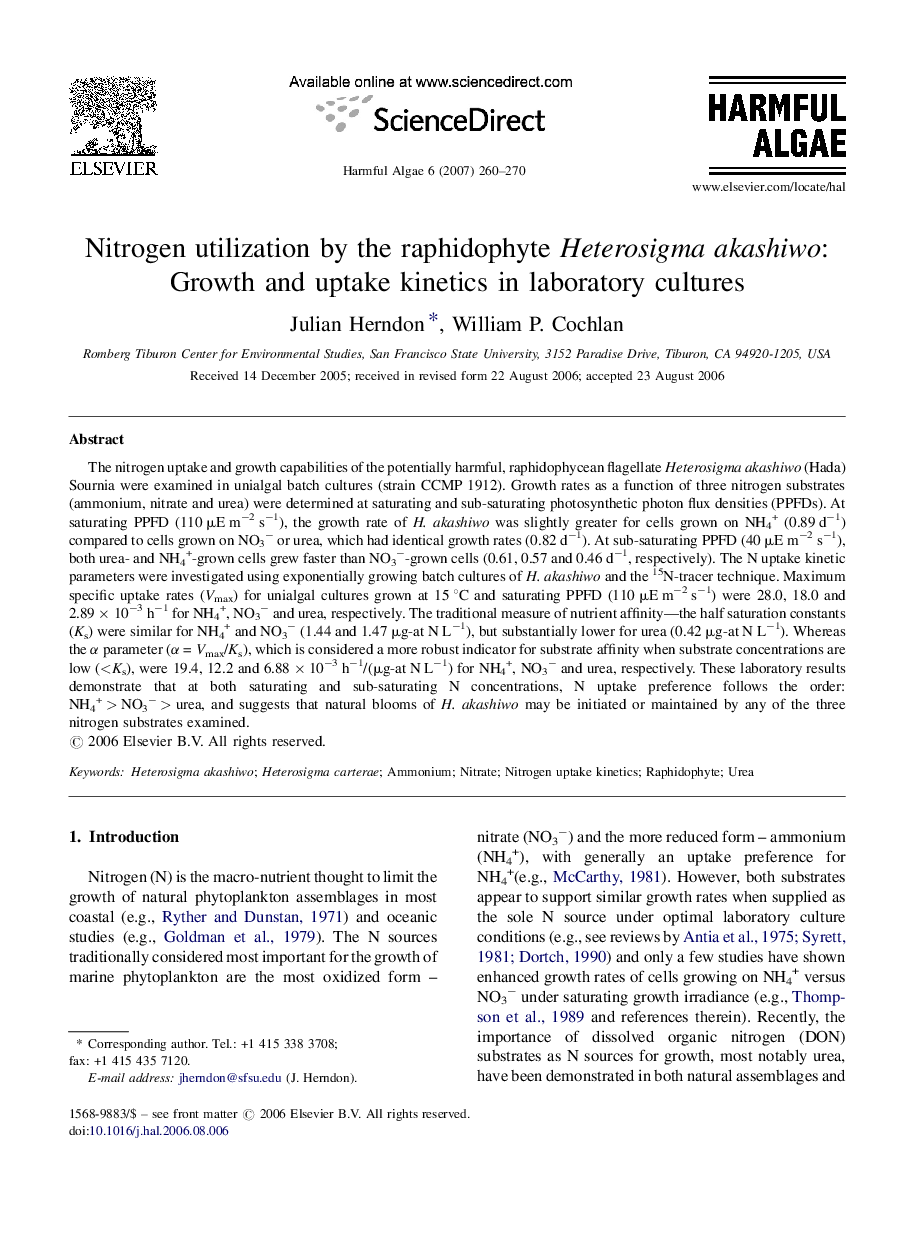| کد مقاله | کد نشریه | سال انتشار | مقاله انگلیسی | نسخه تمام متن |
|---|---|---|---|---|
| 4546260 | 1327499 | 2007 | 11 صفحه PDF | دانلود رایگان |

The nitrogen uptake and growth capabilities of the potentially harmful, raphidophycean flagellate Heterosigma akashiwo (Hada) Sournia were examined in unialgal batch cultures (strain CCMP 1912). Growth rates as a function of three nitrogen substrates (ammonium, nitrate and urea) were determined at saturating and sub-saturating photosynthetic photon flux densities (PPFDs). At saturating PPFD (110 μE m−2 s−1), the growth rate of H. akashiwo was slightly greater for cells grown on NH4+ (0.89 d−1) compared to cells grown on NO3− or urea, which had identical growth rates (0.82 d−1). At sub-saturating PPFD (40 μE m−2 s−1), both urea- and NH4+-grown cells grew faster than NO3−-grown cells (0.61, 0.57 and 0.46 d−1, respectively). The N uptake kinetic parameters were investigated using exponentially growing batch cultures of H. akashiwo and the 15N-tracer technique. Maximum specific uptake rates (Vmax) for unialgal cultures grown at 15 °C and saturating PPFD (110 μE m−2 s−1) were 28.0, 18.0 and 2.89 × 10−3 h−1 for NH4+, NO3− and urea, respectively. The traditional measure of nutrient affinity—the half saturation constants (Ks) were similar for NH4+ and NO3− (1.44 and 1.47 μg-at N L−1), but substantially lower for urea (0.42 μg-at N L−1). Whereas the α parameter (α = Vmax/Ks), which is considered a more robust indicator for substrate affinity when substrate concentrations are low (
Journal: Harmful Algae - Volume 6, Issue 2, February 2007, Pages 260–270